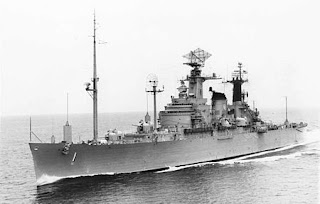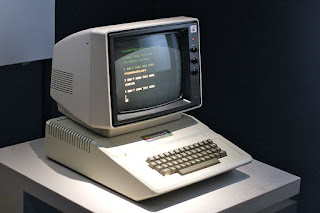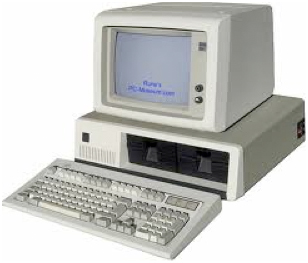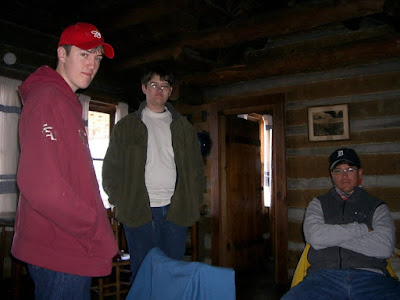 |
| Boxes of plebe year Midshipman hats |
Involvement in the NROTC scholarship program involves participation in three Midshipman cruises, one during each of the three summers of a normal four-year bachelors degree program. Typically, the first cruise, between freshman and sophomore years, is on a ship. The Midshipmen wear enlisted-type white uniforms and Dixie-cup styled hats with a blue stripe around the rim. They complete a series of written workbooks and are assigned to the various departments of a ship over a period of about 6-8 weeks. The second cruise, made between the second and third years, is an indoctrination summer, introducing the Midshipmen to Marine Corps training as well as naval air indoctrination. Lastly, prior to the senior year, the Middies go back to sea on ships, this time acting in their future roles of junior officers. They again complete workbook assignments, but this time, the assignments have much more to do with their future responsibilities and less to do with introducing them to shipboard life.
In the Rochester unit, assignments to Summer cruises were based on performance. A list of available billets would come in and the highest scoring Midshipman got the first choice from the list. It followed that each succeeding high-scorer got his choice of remaining assignments. The first summer I was to go on a cruise was 1959. I chose an Atlantic fleet cruise on a large combatant in the hopes that I might get to participate in a NATO joint exercise. My orders arrived shortly before the Summer break. I was to report on a certain day in June to the USS Northampton (CLC-1), based in Norfolk, Virginia.
We were fitted with our new uniforms, taught how to fold them properly and stow them in our duffel bag. We were provided with a list of toilet articles and other items to include when we reported aboard. Our training included shipboard etiquette -- when and how to properly salute, how to board and disembark the ship, seating conventions in the mess deck, shipboard timetables, etc. I was eager to get started!
 |
| The City of Richmond, our home for a night |
 |
| The USS Northampton (CLC-1) in 1959 |
The Midshipman contingent aboard the ship that summer was 40 individuals -- 20 from the NROTC program and 20 from the Naval Academy. We were divided up into four groups, one each for the initial assignments to the Deck, Engineering, Operations, and Supply Departments, within which we would begin completing our workbooks. Every couple of weeks, we rotated to the next sequential department assignment. In addition to our workbook assignments, we also stood watches in the currently active department. This meant we were in an assigned watch station, such as the bridge as a telephone talker, or the Combat Information Center, or an engine room for periods of four hours separated by eight hours in which to sleep, eat, bathe, and work on completing our workbooks. We also had cleaning assignments and were expected to be at Quarters muster at 06:30 if not on watch. It was a busy time.
We would bunk in Living Compartment 2-129-0-L, a compartment 2 decks below the main deck, at the 129th frame of the ship (close to amidship), on the centerline. My initial cleaning assignment was a head and shower room not far from the Midshipman sleeping quarters. I was to totally clean the facility, scour the showers, toilets, sinks and urinals and polish the brass and copper between the time the Midshipmen evacuated it around 06:25 and 09:15 or so when the Executive Officer showed up for an inspection. That may seem like a lot of time to clean a few commodes, sinks, and urinals and polish some brightwork. It is not. In fact, it was damn near impossible to get everything ship shape from the time I returned from Quarters until the XO made his appearance. Fortunately, I came up with a brilliant scheme.
I experimented for a few nights polishing some of the brass and copper lines and wrapping them with toilet paper. It might keep the moist air from the showers from tarnishing the metal. It seemed to work! So finally, one night, I polished every bit of the brightwork and wrapped it all. This worked perfectly for a few nights. In the mornings, I'd scour all the fixtures, scrub the deck, and then unwrap the brightwork. I'd flush the toilet paper down the toilets. The place sparkled. The XO and the Sergeant-at-Arms, his escort, found a couple minor discrepancies each morning, but were generally pleased with my work. I was very pleased. Until about the fourth or fifth morning after my breakthrough.
I was only about halfway done unwrapping my candystripe-wrapped pipework when I heard the Sergeant's "Attention on deck!" I was had! The XO demanded an explanation. I blubbered through some pitiful excuse and was severely chastised for wasting valuable Government materials. Needless to say, the word got around and I took a bit of harassment for a few days.
Not long after we arrived on board, the ship got underway for NATO joint exercises in the Atlantic. We had a large number of VIPs on board. The press contingent included Hanson Baldwin, the 1957 Pulitzer Prize winning New York Times Military Editor. While on the quarterdeck watch the day before we departed, I carried a couple of suitcases belonging to Hungarian actress and socialite Eva Gabor, who was also a guest.
We got underway and soon formed up with a couple of cruisers, the Boston and Canberra, and about a dozen destroyers. It became evident that one purpose of this expedition was to impress our guests with the performance of the Terrier guided missile, an early surface-to-air missile that had been introduced into the fleet in the mid-1950's.
 |
| The Terrier launcher |
The first drone was prepared and mounted on a catapult launcher that extended over the port lifeline. The narrator counted down and the launcher fired. We could hear the drone's engine faintly as it nosedived into the Atlantic a few hundred yards from the cruiser. The narrator diplomatically informed us that there had apparently been a malfunction in the drone, but that another was being prepared.
After the second drone was sucessfully launched and on station, we had a brief countdown for the launch of the missile. At "0" nothing happened. There was a deafening silence. "Apparently, there has been a malfunction in the missile. The crew is evaluating the situation." While the crew was "evaluating," we were informed that the target drone had run out of fuel and was lost. After about another hour, we finally saw a successful drone launch, followed by a successful Terrier launch and hit. The entire display was certainly not the Navy's finest hour.
We returned to Norfolk to drop of the VIPs and immediately went back to sea for about two weeks of NATO joint exercises with Canadian, British, and French vessels. I rotated through all the ship's departments, completed my workbooks, and thoroughly enjoyed my first experience at sea. The training we received was well-planned and administered by senior Midshipmen from the Naval Academy. I was impressed as I returned to Rochester for my sophomore year.
The second Midshipman cruise would take me first to Little Creek, Virginia, for 4 weeks of Marine Corps indoctrination at the Amphibious Base, followed by 4 weeks of Aviation Indoctrination at the Naval Air Station, Corpus Christi, Texas. I dreaded the Marine Corps portion of the summer, as I was not in great physical condition. I really looked forward to the aviation portion, as my brother was a newly-minted Marine Corps jet pilot, and I had ambitions to take the aviation option when I would be commissioned.
Before we left Rochester, our Marine Corps Gunnery Sergeant made sure we were all issued our fatigue uniforms and combat boots for the Little Creek experience. I took a bus to Norfolk and got a military shuttle to the Little Creek Amphibious Base to report for duty. There were Midshipmen from about twenty-five of the fifty-two NROTC units represented in the arriving throng. We were assigned to one of eight Midshipman companies residing in a common four-story barracks. Our company was under the command of a Marine Corps Gunnery Sergeant and a Marine Major. We were very fortunate to have superb leadership. On the first morning as we formed up for quarters, our Sergeant informed us that each week, a "color company" would be selected based on our week's performance. The reward would be that you'd be excused from the obstacle course portion of the physical training during the ensuing week. He encouraged us to "bust our asses" to be the color company.
As a result, we worked extra hard and were the color company all four weeks! The obstacle course training started at 16:00, so my company usually had showered and were at the Officer's Club by 17:00, enjoying the summer weather and having a beer. The rest of our training was rigorous and physically strenuous, but was superbly planned and managed. My fears had been for naught. I thoroughly enjoyed every bit of this experience.
We spent a couple of days with the Marine Recon forces running everywhere we went. We raced up and down the beach hauling heavy rubber boats on our shoulders. "At the high carry, Raise Boats!" But even this strenuous period was extremely well planned and executed. And you knew that it would soon be over, no matter how sore you might be.
 |
| One of the types of landing craft we used in our successful assault |
The final part of our training involved planning and conducting an amphibious assault on "Red Beach." We had an old World War II Personnel Carrier anchored off the beach. We spent the night in the very hot cramped quarters of this antiquated APA, then debarked for the beach in equally outdated landing craft (LCMs, LCVPs, and other craft that now exist only in museums). I had originally been slated to be a boat formation commander. At the last moment, I learned that my brother's F-8 Crusader squadron was flying up from Beaufort, SC, to participate in our assault. My Major got me transferred to the aviation management part of our organization so I could be directing aviation assets during the attack. I got to talk with Willy and his buddies as the attack unfolded. We successfully took the beach.
 |
| The t-34 Mentor |
 |
| The F-9F-8T Grumman Cougar trainer |
After we had had completed a few hours in the T-34, we got two 1-hour flights in a Grumman F9F-8T, the training 2-seat version of the Navy's F9 Cougar jet fighter. I remember strapping in the front seat with the pilot behind me. I could hear his exchange with the crew and the tower over the headphones in my helmet, but I was unaware when he had started the engine. There was none of the constant vibration we had experienced with the reciprocating engine of the T-34. Suddenly we were taxiing. Then, at the end of the runway, he told me to hold on, and in no time we were airborne, and soon thereafter, in vertical climb. What a fabulous experience.
And so, in what seemed like no time, this summer cruise was over. I returned from Corpus Christi by hitch hiking. I have already written about that experience.
Toward the end of my junior year, I ranked third in my NROTC class at Rochester. This meant that I'd pretty much get my choice of available cruises when the list of cruises arrived. The list, when it finally arrived, was really interesting. There were a number of slots for a Great Lakes cruise, 3 billets for submarine cruises (on the existing diesel-powered boats), an Arctic cruise on a Navy-operated icebreaker, 2 billets for a Mediterranean cruise on a destroyer, and various other billets for east-coast ports. After much consideration, I chose the Med cruise.
In mid-June I reported to the USS James C. Owens (DD-776), a Sumner-class destroyer. Twenty first-class (senior) Midshipmen were aboard for the voyage across the Atlantic. Once we arrived in the Med, some of us would be transferred to other ships. The trip over was uneventful and took about ten days as we engaged in training maneuvers with the other ships in our operations group. I read James Michener's Hawaii on the way over in my leisure time. We rotated through various departments much as we had on our first cruise.
 |
| The USS R. L. Wilson (DD-847) |
All three of my cruises were memorable. They were generally well thought out and taught us much that we would need and use in our future naval careers, regardless how brief or long. I still find myself recalling much of the wisdom that was an integral part of that training -- "Praise in public; Criticize in private" for example. I have often thought about how much the non-scholarship NROTC candidates missed by not participating in these Summer exercises.

















